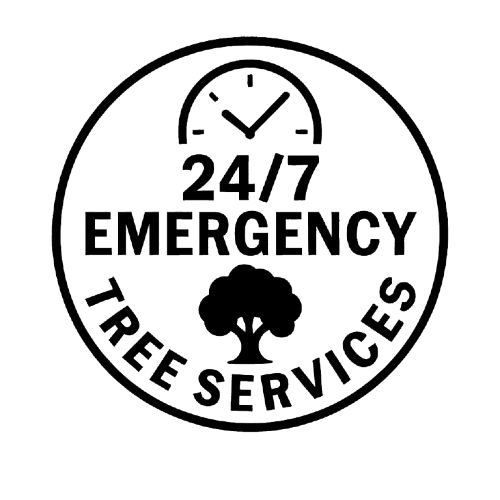Urban Tree Removal: Solving Safety, Legal, and Environmental Challenges
Tree removal in urban environments presents unique complexities beyond simply cutting down a tree. The proximity to buildings, power lines, pedestrian areas, and strict environmental and legal regulations make this task particularly challenging. Urban forests provide numerous benefits—such as improved air quality, shade, and biodiversity—so it’s essential to approach tree removal thoughtfully and responsibly. Balancing safety, sustainability, and regulatory requirements is critical in ensuring that tree removal in cities is handled efficiently and with minimal negative impact. Key Takeaways: Safety and Risk Mitigation: Urban tree removal requires careful planning to manage safety risks, including those posed to nearby structures, roads, and pedestrians. Skilled experts and cutting-edge technology lessen these risks. Legal and Environmental Considerations: Local laws and environmental concerns can complicate removal. Obtaining the necessary permits and adopting sustainable practices, such as tree replanting and wood recycling, are vital to minimizing the ecological footprint. Community Engagement and Collaboration: Gaining support from local communities and ensuring transparency throughout the process helps prevent opposition and encourages active participation in urban tree management efforts. Common Challenges of Tree Removal in Urban Areas Tree removal in urban settings presents several challenges that can complicate the process and increase the risks. From limited space to strict legal regulations, urban tree removal requires a carefully planned approach to address these common obstacles. Space Constraints Urban areas are typically crowded with buildings, roads, and other infrastructure, leaving little room for the large machinery and equipment needed for tree removal. Maneuvering heavy machinery in tight spaces is not only challenging but can also cause damage to surrounding properties if not handled with care. These space constraints require specialized equipment, such as cranes or compact machinery, that can operate efficiently in confined environments without risking damage to adjacent structures. Safety Risks The proximity of trees to buildings, roads, power lines, and pedestrian areas significantly increases the risks associated with tree removal in cities. Falling branches or trees can result in electrical blackouts, property damage, and risks to human safety. Safety precautions are essential in these scenarios, and detailed risk assessments must be conducted before tree removal begins. This often involves securing the area, rerouting pedestrian and vehicle traffic, and using experienced tree removal professionals who understand the risks. Environmental Concerns Urban trees provide numerous environmental benefits, including improving air quality, offering shade, and supporting local wildlife. Removing trees in densely populated areas can have a negative environmental impact, reducing the overall green space and affecting the local ecosystem. The “urban heat island” effect, brought on by the removal of mature trees, can also result in higher temperatures in urban areas and less habitat for species, including birds. To mitigate these concerns, exploring options such as tree replanting and recycling wood is essential to balance development and environmental sustainability. Legal and Regulatory Issues Strict regulations often govern tree removal in cities. Many urban areas have laws protecting certain species of trees, particularly heritage or old-growth trees, which cannot be removed without special permits. Additionally, some cities require tree removal to be offset by planting new trees elsewhere. Navigating the legal landscape can be time-consuming, requiring permits, inspections, and adherence to local environmental laws. Failure to comply leads to fines, legal disputes, and community backlash. Community Opposition In some cases, local communities may strongly oppose the removal of trees, mainly if they are seen as landmarks or valuable contributors to the neighborhood’s aesthetic and environmental quality. Public outcry may arise if residents feel tree removal is unnecessary or detrimental to their environment. This opposition can delay or halt tree removal projects, making community engagement and transparency critical components of the process. Open communication with residents, explaining the reasons for removal, and offering solutions like replanting programs can help mitigate resistance and gain public support. Solutions to Overcome Tree Removal Challenges Urban tree removal presents various obstacles, but several solutions can address these challenges and ensure a safe, compliant, and sustainable process. Below are some essential methods to overcome these challenges. Advanced Technology & Equipment Urban areas with limited space require the use of specialized machinery. Cranes, aerial lifts, and compact machinery designed for tight spaces allow tree removal in confined environments. These machines can operate efficiently without causing damage to nearby structures, power lines, or roads. Advanced equipment such as tree removal cranes can hoist large sections of trees, minimizing the need to manually cut down branches that could fall and pose a danger. Equipment Purpose Benefit Cranes Hoist large tree sections from confined spaces Reduces manual labor, increases safety Aerial Lifts Access high branches in tight urban spaces Safely manages tall tree removal Compact Machinery Operates in limited urban spaces Navigates through narrow areas Careful Planning and Risk Assessment Before removing a tree, a detailed risk assessment is essential. This assessment includes evaluating the tree’s health, size, and proximity to buildings, roads, and power lines. Potential hazards, such as falling branches or risks to pedestrians, must also be identified. With this information, a tailored plan can be developed, outlining specific safety measures, necessary equipment, and precautions to protect surrounding property and people. A comprehensive risk assessment reduces the likelihood of accidents and ensures the process runs smoothly. Steps in Risk Assessment Key Considerations Tree Health & Condition Evaluation Assess tree stability and risk of collapse. Proximity to Structures Measure the distance to buildings, roads, and power lines. Hazard Identification Identify potential safety risks for workers and residents. Sustainable Removal Practices To minimize environmental impacts, cities should adopt sustainable tree removal practices. These include replanting trees in suitable locations, recycling wood, and using eco-friendly disposal techniques. Tree replanting ensures that urban green spaces are preserved, maintaining air quality and biodiversity. Wood recycling, such as converting wood into mulch or biofuel, helps reduce waste and promote sustainability. These methods ensure that tree removal does not negatively affect the local ecosystem. Practice Benefit Tree Replanting It helps restore urban green space and maintain biodiversity. Wood Recycling Reduces waste by repurposing tree material Eco-Friendly Disposal Minimizes the environmental footprint of tree removal Hiring




